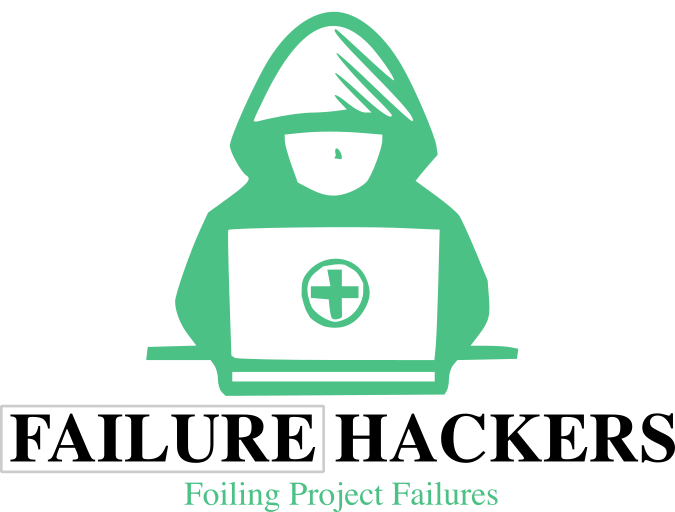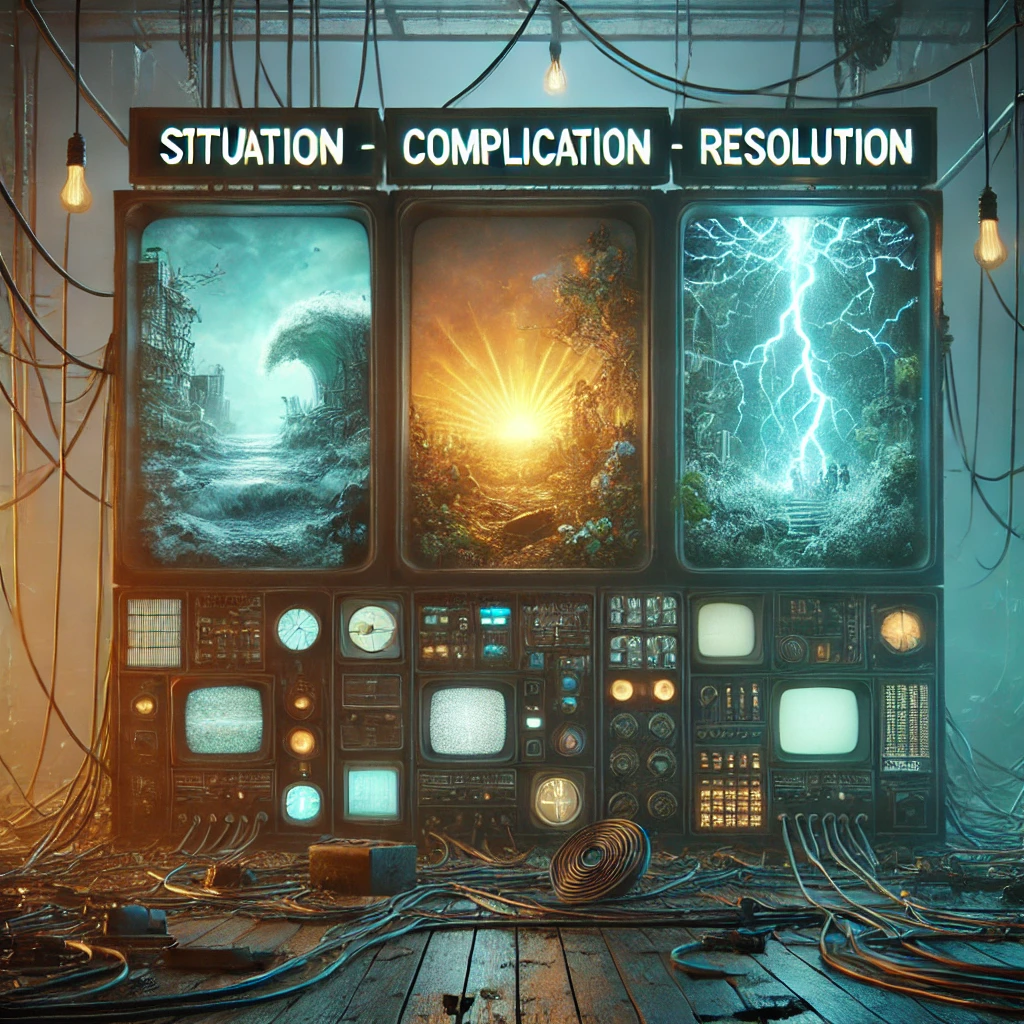Using Situation–Complication–Resolution to Inspire Action and Unite Stakeholders
Throughout history, storytelling has been an intrinsic part of human culture. It is a powerful means of communication that transcends languages, cultures, and eras. In today’s fast-paced world, effective storytelling can be a game-changer, especially when it comes to solving problems and rallying stakeholders around a common vision. The Situation–Complication–Resolution (SCR) model provides a structured approach that not only makes stories compelling but also galvanises action and fosters collaboration. Let’s explore this storytelling framework and see how you can apply it in your own work.
Understanding the Situation–Complication–Resolution Model
The SCR model is a straightforward yet effective narrative framework comprised of three key components:
- Situation: This element sets the stage by providing context. It describes the current state of affairs, outlining who is involved and what is at stake. The situation establishes the background needed for the audience to understand the relevance and urgency of the story.
- Complication: Here we introduce a challenge or problem that disrupts the status quo. This component is vital as it creates tension and urgency within the narrative, prompting the audience to become emotionally invested. The complication often highlights the stakes involved and elucidates why immediate action is necessary.
- Resolution: In the final segment, we present solutions and possible outcomes. This part resolves the tension created by the complication and leaves the audience with a sense of closure or a call to action. A well-crafted resolution should inspire hope and motivate stakeholders to take action.
By utilising the SCR framework, you can not only communicate complex problems more effectively but also unite stakeholders around a shared goal.
Why Stakeholders Need to Be Engaged
Stakeholders are individuals or groups with vested interests in a project or organisation. They can be clients, employees, investors, community members, or even regulatory bodies. Engaging stakeholders is crucial because their support, insights, and resources often determine the success of initiatives.
However, stakeholder engagement is not merely about providing information; it’s about fostering connection and collaboration. Effective storytelling serves as a bridge between diverse perspectives and encourages active participation. By using the SCR model, you can address stakeholders’ concerns, showcase the importance of their involvement, and ultimately drive meaningful action.
Crafting Your Story Using the SCR Framework
Step 1: Define the Situation
Start by clearly articulating the context of your story. Ask yourself:
- What is the current state of affairs?
- Who are the key stakeholders involved?
- What is the significance of the situation?
This step requires a deep understanding of your audience. Tailor the situation to resonate with their experiences and priorities. For example, if you’re addressing a community about an upcoming environmental project, highlight the area’s current issues related to pollution or habitat loss. Use statistics, anecdotes, or quotes to create an emotional connection.
Example: “Our local river, once teeming with life, has seen a dramatic decline in biodiversity due to pollution. The community’s favourite fishing spots now yield little more than debris, and families have begun to express concern over the water quality.”
Step 2: Introduce the Complication
Identify the complications that arise within the current situation. This is where you should emphasise the urgency of the issue and the potential consequences of inaction.
Ask yourself:
- What challenges are affecting the current situation?
- Why is it imperative to address these challenges now?
Use vivid imagery and relatable scenarios to engage your audience’s emotions. Highlighting potential ramifications makes the problem feel more immediate and personal.
Example: “Recent reports show that without intervention, the river could become completely devoid of fish within the next five years. Families who rely on fishing for their livelihood would face loss, and children could grow up without the same relationship with nature that many of us cherish.”
Step 3: Provide the Resolution
Once you’ve fully established the situation and its complications, it’s time to propose solutions. This is your opportunity to outline actionable steps that stakeholders can take to resolve the issues presented.
Ask yourself:
- What are the potential solutions to the complications identified?
- How can stakeholders contribute to these solutions?
- What are the anticipated outcomes if stakeholders engage?
Presenting a clear and actionable resolution will empower stakeholders to act. Use this segment to galvanise support by emphasizing the positive impact that collective effort can achieve.
Example: “We have the power to restore our river by implementing a community-led clean-up initiative and advocating for stronger regulations on pollutants. By coming together for monthly clean-up days, we can directly improve our environment and foster a deeper connection with our local ecosystem. Imagine fishing in a revitalised river alongside your children and sharing that tradition for generations to come!”
Putting the SCR Model into Practice
Now that you understand the components of the SCR model, let’s explore practical ways to implement storytelling in your stakeholder engagement efforts.
1. Workshops and Training Sessions
Host workshops to train your team or community members in storytelling techniques. Educating others on the SCR framework can empower them to communicate their ideas more effectively, enhancing overall stakeholder engagement.
2. Create Compelling Presentations
Utilise the SCR model in presentations to ensure your audience follows a logical and engaging flow. Design your slides to emphasise each component, incorporating visuals and anecdotes that support your narrative.
3. Engage on Social Media
Social media platforms can serve as powerful storytelling channels. Share snippets of your story using the SCR framework through posts, stories, or videos. This approach invites dialogue and allows for rapid feedback from your audience, helping you refine your message.
4. Gather Testimonials
Encourage stakeholders to share their own stories related to your initiative. Curate testimonials that exemplify the significance of the issue and the resolutions being proposed. Personal narratives can amplify your message and reflect a shared commitment to action.
5. Foster Collaboration
Invite stakeholders to contribute to the storytelling process. Collaboration enhances buy-in and fosters a sense of ownership. Consider forming a steering committee composed of diverse stakeholders, allowing multiple perspectives to shape the narrative and solutions.
Conclusion: The Power of Storytelling
In a world filled with information overload, the art of storytelling stands out as a potent tool for problem solvers. The Situation–Complication–Resolution model offers a structured yet flexible approach to convey complex issues while galvanising action and uniting stakeholders.
By thoughtfully crafting your narratives, you can transform abstract problems into relatable stories that inspire hope and motivate collaboration. Remember, your story is not just a reflection of the challenges you face but also a beacon of the possibilities that lie ahead when people come together.
As you embark on your journey to utilise storytelling for stakeholder engagement, remember that every situation is unique. By adapting the SCR framework to the specific needs of your audience, you can drive meaningful change and create a shared vision for the future.

